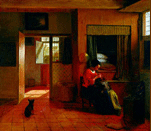










Alison Weber
Spanish
University of Virginia
This paper will trace the fortunes of three women—a nun and two non-cloistered devout women—who were widely revered for their piety and thaumaturgical powers in late sixteenth- and early seventeenth-century Castile. Although their physical freedom was curtailed (by monastic enclosure, Inquisitorial surveillance, and gendered notions of decorum), they nevertheless succeeded in exerting considerable influence on individuals from multiple social strata. As an alternative to the “separate spheres” paradigm, I will concentrate on the liminal spaces in which women acted and formed alliances: the convent’s turn, the aisle of a church, and the mouth of a cave. Without minimizing the impact of ideologies predicated in the subordination—and physical isolation—of women, I argue that countervailing social practices rendered boundaries permeable, allowing some women to exercise agency in the interstices of early modern polities and geographies.
|
|
|
||||||
|
|
 |
 |
|
||||
 |
|
 |
|
||||
|
|
|
||||||
|
|
|
||||||
 |
|
||||||
|
|
|
||||||
| |
|
||||||
 |
|
||||||
 |
|
||||||
 |
|
||||||
 |
|
||||||
|
|
|
||||||
|
|
 |
|
|
||||
 |
|
||||||
|
|
|
|
|
|
|
|
|